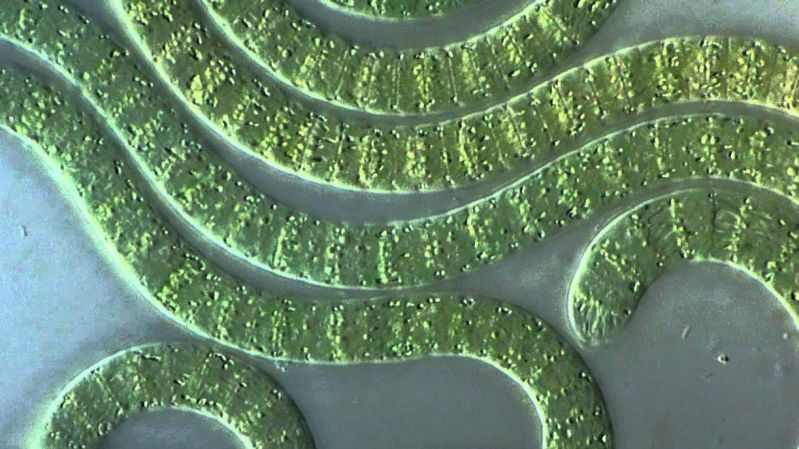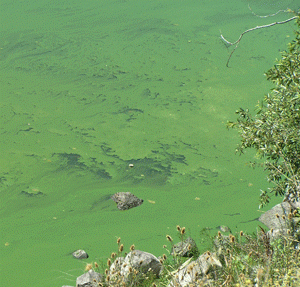Regulatory Approach for Toxic Cyanobacteria in Drinking Water
Published on by Alexander Kouzminov, Senior Policy Advisor - Water Policy at Waikato Regional Council in Government
Regulatory Approach for Toxic Cyanobacteria in Drinking-water

Cyanobacterial water blooms are becoming an increasing problem in New Zealand. They occur in drinking-water supply reservoirs, rivers used as drinking-water sources, and in recreational waters.
The frequency, intensity, duration and geographic spread of cyanobacterial blooms are expected to increase if the current trends of increased warming and nutrient levels in New Zealand waters continue.
In New Zealand, 73% ( in terms of total population) of the drinking- water comes from surface water supplies. Blooms have economic impacts ranging from the significant increase in water supply treatment costs or the need to use an alternative drinking-water source.
There are also social impacts from the disruption of recreational use of water bodies, - see, for example, Waikato River 2003 incident, - details are provided).
New Zealand Ministry of Health has developed national criteria for assessing the risk of toxic cyanobacteria and their toxins in freshwater and drinking-water systems.
These criteria are part of an integrated risk management system and regulatory policy for safety of drinking-water, - for details see Kouzminov, A. (2005). ‘New Zealand: Risk assessment, management and regulatory approach for cyanobacteria and cyanotoxins in drinking- water’. In Chorus Ingrid (Ed.) Current Approaches to Cyanotoxin Risk Assessment, Risk Management and Regulations in Different Countries. (2005); Federal Environmental Agency, Dessau, Germany, 93-98;
http://www.umweltbundesamt.de/sites/default/files/medien/publikation/long/2910.pdf
The principal emphasis of the health risk management system for cyanobacteria and cyanotoxins is to use a comprehensive multi-barrier process-control approach to promote quality assurance. These barriers cover all stages of the drinking-water supply from catchment to the user’s tap. This complemented by a monitoring programme used as a final quality control which provides a trigger for remedial action where this is necessary.
The main objective of this approach is to achieve an acceptable level of certainty about the water quality through the use of risk management principles to ensure that multiple barriers to cyanobacterial toxins are in place and working properly, and to provide a high degree of quality assurance in the safety of the water for all drinking- water supplies, whether these are large (>10, 000) or small ( 25-500 consumers).
The principal risk management system and policy tools developed in New Zealand for water, including the ones that cover cyanobacteria and cyanotoxins in a drinking-water source, are:
- Drinking-Water Standards for New Zealand 2005 (revised 2008), see Chapter 7: Cyanotoxin Compliance Criteria; http://www.health.govt.nz/publication/drinking-water-standards-new-zealand-2005-revised-2008
- Guidelines for Drinking-Water Quality Management for New Zealand 2013, see Chapter 9: Cyanobacterial Compliance; http://www.health.govt.nz/publication/guidelines-drinking-water-quality-management-new-zealand-2013
- Water Safety Plan Guide for Drinking-Water 20014 , see Part 4: Pre-treatment Processes – Algicide Application; http://www.health.govt.nz/publication/water-safety-plan-guides-drinking-water-supplies
- Public Health Grading of Community Drinking-Water Supplies 2003; http://www.drinkingwater.esr.cri.nz/general/grading.asp
- Register of Community Drinking-Water Supplies in New Zealand (electronic database) which lists and provides easily accessible information about chemical and microbiological quality of community water supplies in New Zealand; http://www.health.govt.nz/our-work/environmental-health/drinking-water
- Register of Ministry of Health Recognised Laboratories for compliance testing; http://www.drinkingwater.esr.cri.nz/mohlabs/labmain.asp
- Water Information New Zealand – a national comprehensive electronic water quality information management system for the management of monitoring, surveillance and compliance data; http://www.drinkingwater.esr.cri.nz/
Each drinking- water supplier (either large > 10,000 or small 25-500 consumers) should include validation of control measures, which are most effective against cyanotoxins in individual water safety plans ( Water Safety Plan Guide for Drinking-Water 20014 ), - see also ‘A Framework on How to Prepare and Develop Water Safety Plans for Drinking-water Supplies';
http://www.health.govt.nz/system/files/documents/publications/framework-water-safety-plans-jan14-v2.pdf
 The Waikato River incident:
The Waikato River incident:
The best-documented case of impact of a cyanobacterial bloom in New Zealand is the ‘Waikato River incident’.
This was a bloom event that lasted over January – October 2003 and affected many Waikato drinking-water supplies ( affecting about 960,000 consumers in total), including the Hamilton City Council's supply, which provides water for around 120, 000 consumers) in the North Island.
The bloom also affected 13 recreational lakes (12 also used for drinking-water) along 400 km of the Waikato River that serve 36 water distribution zones.
More than 10 water intakes of the Waikato River are used for drinking-water supply or used by primary processing industries for the production of food and bottled-water. The Waikato River and hydro lakes are a major drinking- water supply for Hamilton City (currently around 150,000 consumers) and many other smaller town along the river.
The Waikato River and hydro lakes incident was a saxitoxin event with the Anabaena planktonica predominant algal type. I would like to highlight that the incident was considered very seriously by the New Zealand health authorities, taking into account that saxitoxin is listed as toxic chemical in The Chemical Weapons ( Prohibition) Convention 1972 (see Schedule 1), and so in this way can be considered as a naturally- occurred ‘ chemical weapon’. Luckily, no illnesses reported from the incident.
Investigation of the Waikato River incident, including a case-based analysis of costs of treatment of harmful blooms of freshwater cyanobacteria, is given in the paper, - Kouzminov, A., Ruck, J., and Wood, S. (2007) New Zealand risk management approach for toxic cyanobacteria in drinking water. Austral. New Zealand J. Public Health, 31(3): 275-281;
http://onlinelibrary.wiley.com/doi/10.1111/j.1467-842X.2007.00061.x/full
This analysis has been used by New Zealand local / regional authorities for risk management of toxic algal blooms, see e.g. http://www.mfe.govt.nz/sites/default/files/appendix-20-cyanotoxin-treatment.pdf
New Zealand has developed an advanced policy for management of cyanotoxins in drinking-water systems. This multi-barrier and process- control risk management approach, reliant on good vertical communication systems between central and local government, which is based on several planning and technical tools, is an advanced approach useful for any country that regularly experiences cyanobacterial problems.
I think, that this information maybe useful for experts who have recently posted the following topics, e.g. EPA Creating Warning System to Detect Algal Blooms; Toxic Blue-green Algae Pose Threat to Drinking-water; Algal Bloom Monitoring.; Removing Toxic Algae from Drinking-water.
Media
Taxonomy
- Bacteria
- Drinking Water Treatment
- Governance
- River Studies
- Algae
- Drinking Water Managment
- Public Health